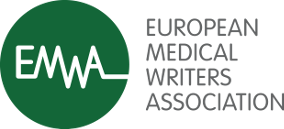Medical Devices Regulation upheaval
Jane Edwards, BSI Medical Device Notified Body.
1. Medical Devices Regulation Upheaval: Great Opportunity for Medical Writers?
The medical device world is facing unprecedented change, global regulations, clinical and technical, the industry has never faced change on this scale. The increased regulatory requirements will affect companies significantly and it is uncertain how many are in a position to deal with the increase in requirements.
Over the last 18 months medical device companies have seen changes in the following areas:
2. ISO 13485:2016, the updated Quality Management System standard.
The latest edition of ISO 13485, the internationally recognized quality management systems standard for the medical device industry, with over 27,000 certificates globally, was published, March 2016. Certification customers have three years to transition from ISO 13485:2003 and the associated European Standard EN ISO 13485:2012. We are now nearly half way through the transition period.
The standard provides an effective framework to meet the comprehensive requirements for a medical devices quality management system; for manufacturers and service providers to both comply and demonstrate their compliance to regulatory requirements.
The requirements in ISO 13485 are used by suppliers or other external parties providing products or services to medical device manufacturers. By using ISO 13485, organizations will be able to demonstrate compliance with regulatory requirements, manage risk, ensure best practice for quality and safety, improve processes and provide confidence to patients.
3. MDSAP: Medical Device Single Audit Program
The MDSAP is an international initiative led by Regulatory Authorities (RA) to implement a program where Auditing Organizations (AO) can conduct a single audit of a medical device manufacturer that would be accepted by multiple regulators to address QMS/GMP requirements. Five of the RAs (Australian TGA, Brazilian ANVISA, Health Canada, US FDA and Japanese MHLW) have been running a three year MDSAP pilot, finalized December 2016. The operational phase of this program began January 2017.
Health Canada has announced that as of 1 January 2019, they will terminate their current CMDCAS program and only accept MDSAP certificates. Manufacturers with products on the market in Canada cannot wait until 29 February 2019 to transition to the ISO 13485:2016 certificate. Failure to meet the 1 January 2019 date for transition to a MDSAP certificate may mean your products will not be licensed in Canada.
4. MDR: Medical Devices Regulation
The final text of the new European Medical Devices Regulation (MDR) has been published in the Official Journal of the European Union. The Regulation entered into force on May 25th, marking the start of the transition period for manufacturers selling medical devices into Europe.
The MDR, which replaces the Medical Devices Directive (93/42/EEC) and Active Implantable Medical Devices Directive (90/385/EEC), has a transition period of three years. Manufacturers have the duration of the transition period to update their technical documentation and processes to meet the new requirements.
This long awaited text brings with it more scrutiny of technical documentation; it addresses concerns over the assessment of product safety and performance by placing stricter requirements on clinical evaluation and post-market clinical follow-up, and requiring better traceability of devices through the supply chain.
5. IVDR: In Vitro Diagnostic Regulation
The IVD industry is about to undergo significant change. The final text of the new European In Vitro Diagnostic Regulation (IVDR) has been published in the Official Journal of the European Union. The Regulation entered into force on May 25th, marking the start of the transition period for manufacturers selling IVD devices into Europe.
The IVDR, which replaces IVD Directive (98/79/EC), has a transition period of five years. Manufacturers have the duration of the transition period to update their technical documentation and processes to meet the new requirements.
The new Regulation addresses some of the challenges posed by the Directive, including a new rule-based classification system for products, superseding the current list-based approach. This in itself makes the Regulation more practical, by allowing it to remain relevant to an innovative and growing industry. It also means that a far larger number of IVD manufacturers require a notified body to certify their products, as classification rules are applied to all IVDs, rather than using an exclusive list of specific products to determine which require a notified body. Under the IVD Directive, 90% of the industry could self-certify, but with the Regulation, up to 90% of the industry now requires a notified body.
See the latest information for both MDR and IVDR from the EU Commission here.
6. New Clinical requirements: Med Dev 2.7.1 rev 4
The European Commission released revision 4 of Clinical Evaluation guidance document MEDDEV 2.7.1 on 1 July 2016.
Although the new revision is longer and more detailed, in practise most of the differences are to provide helpful guidance and examples, and to clarify existing requirements, rather than to introduce new requirements. Guidance that is much more explicit is provided to manufacturers on how to undertake a robust and systematic clinical evaluation, and how to demonstrate the scientific validity of their data and conclusions. The new revision is also beginning to align with the European Medical Devices Regulation, and it is believed that this will be helpful in transitioning from the requirements of the Directives to those of the Regulation. The main changes centre on:
Clarification on:
Frequency of updates to the Clinical Evaluation Report (CER).
Specific and measurable objectives for the CER.
Establishing the state of the art.
Scientific validity of data.
Equivalence.
When is a clinical investigation required?
Risk-benefit.
Post Market Surveillance (PMS) and Post Market Clinical Follow-up (PMCF).
New requirements:
Qualifications of report authors and evaluators.
Access to data for equivalent devices.
7.What does this mean for Medical Writers?
More requirements for manufacturers, more clinical and regulatory documentation will be required which will require more medical writers to work in medical devices. The development of technology ensures this is a growth market and now with the changes hitting the market the need for good, knowledgeable writers will increase substantially.
Maybe it is time to dust off some physics text books?

